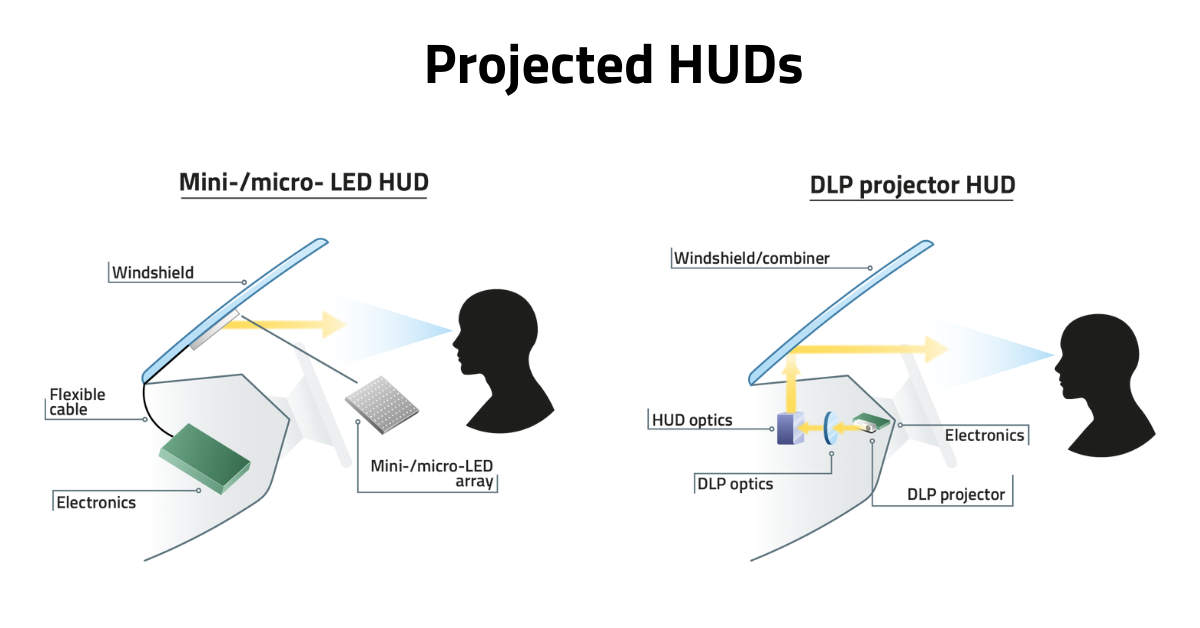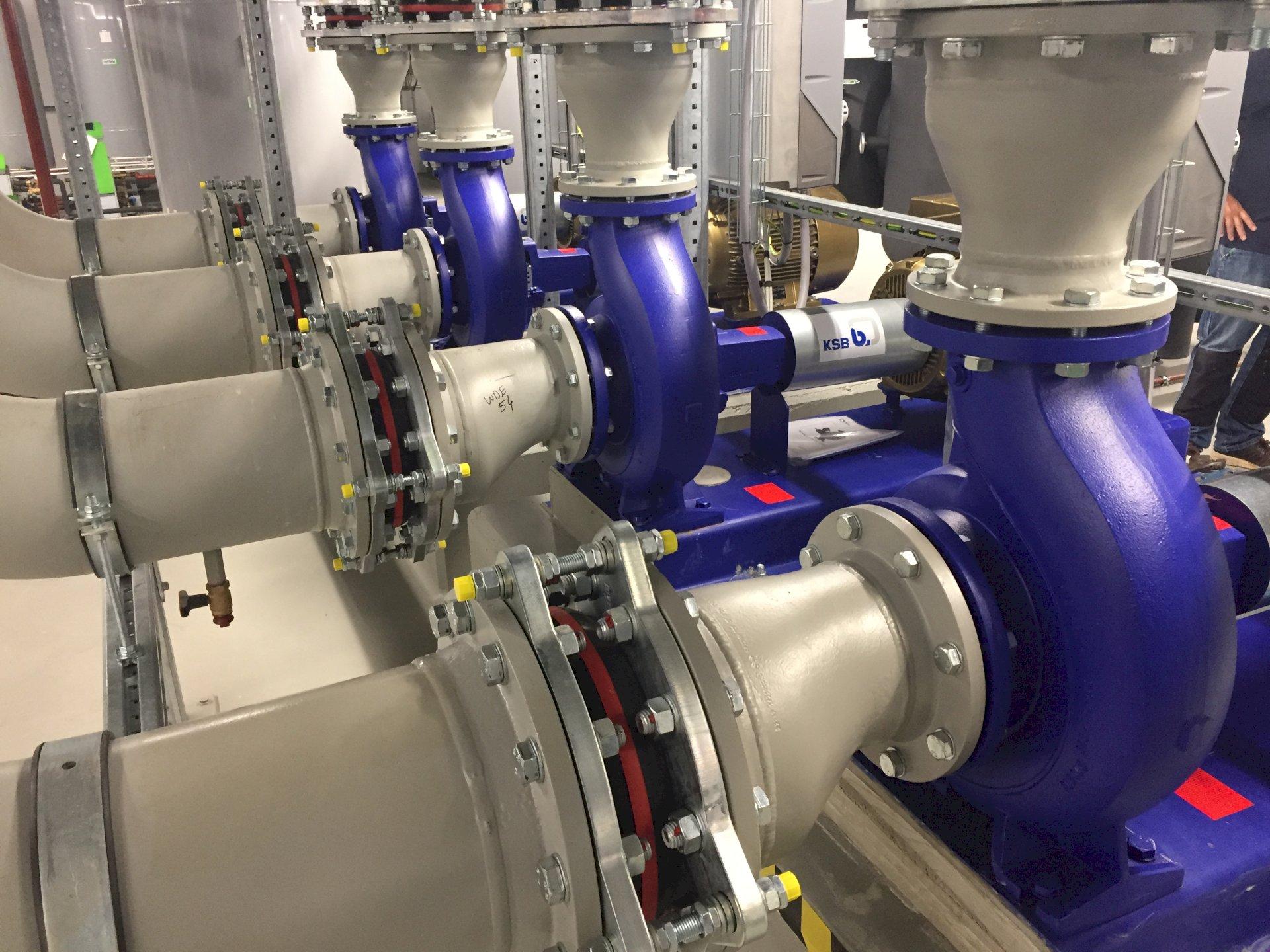 Door: Nijkerk Electronics
Door: Nijkerk Electronics Dashboards in vehicles play an essential role in ensuring the driving is safe and smooth by providing relevant data, such as speed, RPM, oil level, warnings, etc. But as more and more data are presented on multiple screens in vehicles, critical information can sometimes get lost and become difficult to see. Moreover, glancing between the dashboard and the road can be dangerous, especially when the drivers need to focus and keep their heads up.
Head-up displays for vehicle drivers
That�s why head-up displays (HUDs) have become increasingly popular in recent years in the transportation industry, to show critical information in front of the driver and reduce driver distraction. There are mainly two head-up display technologies: Projected HUD and Emissive HUD.
�Projected HUDs
The typical projected HUD solutions include TFT-/micro-LED-display HUD and DLP projector HUD. TFT-/ micro-LED-display HUD utilizes two mirrors to project the images generated from a micro-LED display, while DLP projector HUD consists of a DLP projector, DLP optics, and HUD optics.

Here are the pros and cons of these two projected HUD solutions.
Pros of projected HUDs
- The focal point is adjustable, e.g. 3 meters ahead of the road. Eyes refocus fast when the driver switches from the road to the projected display that usually floats 3 meters in front of the driver.
- The projected content can be rich and colorful.
- The solution is mature since it has been available and tested in the automotive market for years.
Cons of projected HUDs
- The setup is complex and occupies lots of space (typically 7-10 liters) from the dashboard.
- A special windshield/coating is required.
- The viewing angles are limited.
- The projector shakes when the vehicle shakes, resulting in blurry images.
- They don�t work for vertical windows and windshields, making them unsuitable for buses, RVs, trucks, or vans in most cases.
�

Emissive HUDs
As emissive display technologies advance, some become alternative solutions for creating next-generation head-up displays, which don�t require projected systems. The emissive display technologies that can be used for HUDs include�micro-LED, TOLED, and�LUMINEQ�in-glass/polycarbonate displays.

These solutions use transparent displays to show information in front of the driver. The electronics and flexible cables are compact and hidden, while the display parts are outside the dashboard. Micro-LED arrays can be attached to the windshield or placed above the dashboard as a separate unit as TOLED. LUMINEQ in-glass/polycarbonate displays are laminated in the windshield.
The images below illustrate the setup of three emissive head-up display technologies.

LUMINEQ in-glass/polycarbonate display has the following lamination structure.

Pros and cons of emissive HUDs
The focal point is the significant difference between an emissive HUD and a projected HUD. The focal point of a projected HUD is adjustable and usually placed a few meters ahead of the road, while the focal point of an emissive HUD is on the display, which is placed in the driver�s line of sight. This can be arguably a disadvantage or an advantage, depending on the driver�s preference. The projected information floating a few meters ahead of the driver allows the eyes to refocus faster, but some drivers may find it more distracting when mixed with real-world road conditions.

Besides the focal point, another big difference is the amount of space required for the setup. In this regard, emissive HUDs clearly win. Their construction is simple and requires little space from the vehicle�s interior space. Instead of a complex projection system, the emissive HUDs only consist of compact electronics, a flexible cable, and a display. The electronics are small and take around 0.3L of space from the dashboard, 20-30 times less than the projected HUDs.
�
Furthermore, emissive HUDs handle the shock and vibration better. They work for vertical windshields in commercial and industrial vehicles such as trucks, buses, RVs, vans, cranes, forklifts, and tractors, since the information is shown directly on the display, unlike projected HUDs that usually require certain angles to project images properly.
Among three emissive HUDs, LUMINEQ and mini-LED are made of inorganic materials, while TOLED is made of organic materials. Therefore, environments greatly affect the performance of a TOLED HUD, while the other two are immune to the surroundings including humidity, solar load, and temperatures.

Regarding optical clarity and transmission,�LUMINEQ HUD�is better compared to TOLED and mini-LED. It is clear as glass with 80% transparency and can offer over 70% overall transparency for the whole laminated stack, while TOLED 40% and mini-LED 60% depending on the density of LEDs in an array. LUMINEQ HUD has good clarity and minimal haze, but the other two have clarity and haze issues. The images from LUMINEQ HUD are viewable from 360� angles, both inside and outside the vehicles.
When it comes to the richness of the content, both TOLED and mini-LED can display colorful images, while LUMINEQ in-glass HUD is monochrome.
If you want more information or if you have any questions about this product, please�contact Nijkerk Electronics!
�






